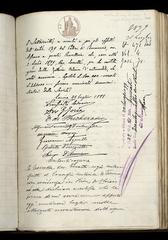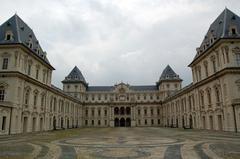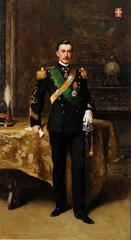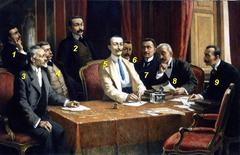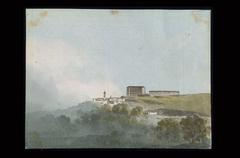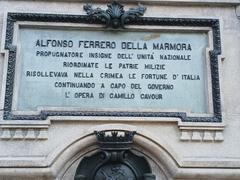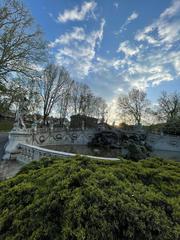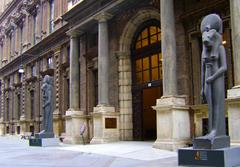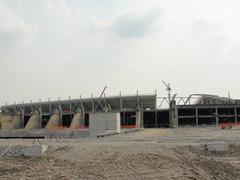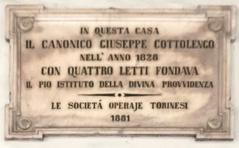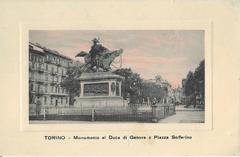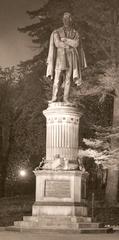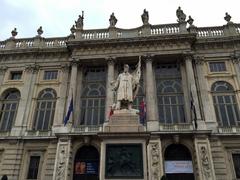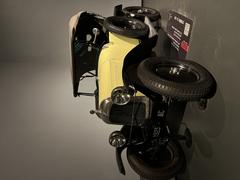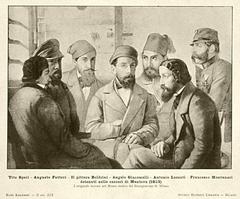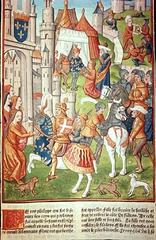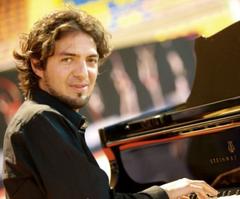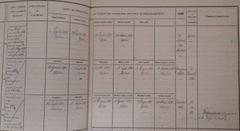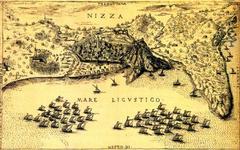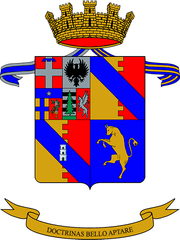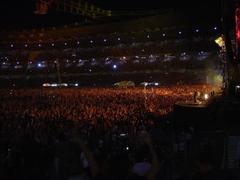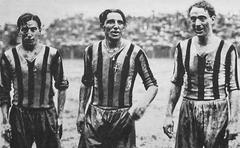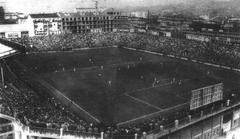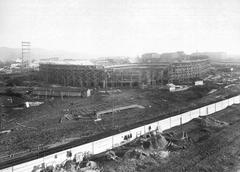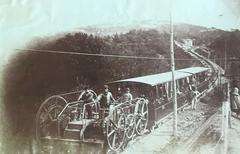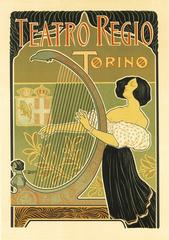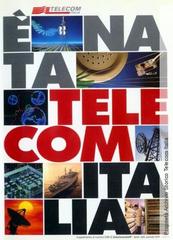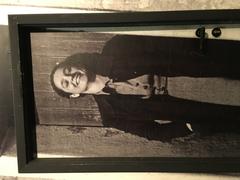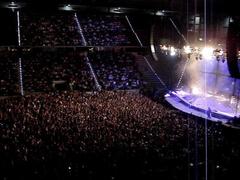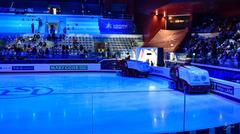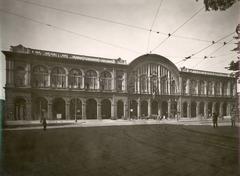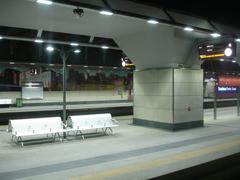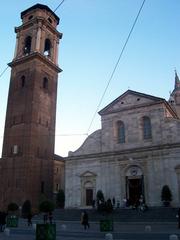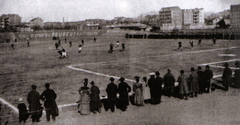Castello di Mirafiori Visiting Hours, Tickets, and Historical Sites in Turin
Date: 14/06/2025
Introduction to Castello di Mirafiori
Nestled on the banks of the Sangone River southwest of Turin, Castello di Mirafiori is a captivating testament to Piedmont’s aristocratic heritage and architectural grandeur. Commissioned in the late 16th century by Duke Carlo Emanuele I of Savoy for his wife, Catherine of Austria and Spain, the castle—also known as Château de Millefleurs or Miraflores—exemplified Renaissance and Baroque aesthetics (Atlante Torino). Once a thriving hub within the “Corona di Delizie” network of Savoy residences, the estate featured renowned gardens and sophisticated water features, reflecting the opulence of the House of Savoy (MuseoTorino).
Though the castle itself no longer stands, visitors can explore archaeological remains and parklands augmented by innovative AR installations that digitally reconstruct its former glory (Springer Series in Design and Innovation). These immersive, free experiences offer a profound engagement with Turin’s layered history. Castello di Mirafiori’s story is closely tied to the evolution of the Mirafiori district, from royal estate to industrial neighborhood (Comune di Torino). This guide details visiting hours, tickets, accessibility, nearby attractions, and the castle’s cultural significance.
Table of Contents
- Origins and Construction
- The Savoy Era
- Decline, Destruction, and Transformation
- Visiting Information: Hours, Tickets, Accessibility
- Augmented Reality and Visitor Experience
- The Mirafiori District: Urban Evolution
- Nearby Attractions and Suggested Itineraries
- Practical Visitor Tips
- Frequently Asked Questions (FAQ)
- Summary and Recommendations
- References
Origins and Construction
Castello di Mirafiori was commissioned in 1580 by Carlo Emanuele I of Savoy as a gift for his wife, Catherine of Austria and Spain. The site, previously known as “La Pellegrina,” was chosen for its scenic location by the Sangone River. The castle’s name, “Mirafiori,” stems from the Spanish “Miraflores,” reflecting Catherine’s heritage (Atlante Torino).
Under architect Carlo di Castellamonte in the early 17th century, the castle adopted late Renaissance and early Baroque features, including grand facades and extensive, meticulously designed gardens. The complex is depicted in the famed “Theatrum Sabaudiae” (1666), offering valuable historical insight (Comune di Torino PDF).
The Savoy Era: Royal Residence and Cultural Center
During the 16th and 17th centuries, Castello di Mirafiori served as a favored retreat for the House of Savoy, hosting courtly gatherings, hunting parties, and diplomatic events (Devoti, 2014). Its proximity to Turin made it an ideal location for royal leisure without sacrificing access to the political heart of the duchy.
The estate’s gardens, famed for elaborate parterres and water features, were enhanced by sophisticated hydraulic engineering, including the diversion of the Sangone River (Defabiani, 1987). The presence of the castle also spurred the development of a village (borgo) and the construction of the Baroque Church of the Visitation of Mary and Saint Barnabas in 1617 (Atlante Torino).
Decline, Destruction, and Transformation
Multiple factors led to the decline of Castello di Mirafiori:
- 17th–18th Centuries: The estate was damaged during Franco-Savoyard conflicts, notably the French incursions of 1646–1706. As the Savoy dynasty shifted its focus to other grand residences (e.g., Reggia di Venaria Reale, Palazzina di Stupinigi), Mirafiori was gradually neglected (Atlante Torino).
- Industrial and Urban Transformation: The surrounding lands were divided into agricultural estates, and later, the district became a hub for industrial and automotive development in the 20th century (Wikivoyage).
- 19th–20th Centuries: The castle fell into disrepair and was ultimately demolished in the late 19th century. The construction of the Mausoleum of Bela Rosin marked the estate’s definitive abandonment (Turismo Torino).
Today, only foundations and fragments of the park survive, yet the site remains a focal point for local heritage and community events.
Visiting Information: Hours, Tickets, Accessibility
Opening Hours
- The park and archaeological remains are open daily, typically from 8:00 AM to 7:00 PM. AR installations are available during these hours.
- Some special events or guided tours may have specific hours—check Comune di Torino Events Calendar.
Tickets
- Entry to the park and AR installations is free.
- Guided tours for groups or during special events require advance booking and typically cost between €5–€10 per person.
Accessibility
- The site features paved and wheelchair-accessible paths.
- Information panels and digital AR experiences are designed for inclusivity, including audio descriptions and subtitles.
How to Get There
- Public Transport: Tram line 4 and bus lines 34, 38, and 63 connect Turin city center to Mirafiori Sud.
- Parking: Limited street parking is available; public transport is recommended during events.
Augmented Reality and Visitor Experience
Although the original castle structures have vanished, visitors can explore the historical foundations and engage with interactive AR installations developed by Politecnico di Torino (Springer Series in Design and Innovation). Use the free mobile or web app on-site to visualize the castle as it once stood.
Key features:
- Interactive AR: Digital reconstructions overlay historical images onto the present landscape.
- Interpretive Panels: Multilingual information boards provide historical context.
The Mirafiori District: Urban Evolution
The Mirafiori district, split into Mirafiori Nord and Mirafiori Sud, grew out of the former castle estate (Atlante Torino). The area transformed from rural and aristocratic lands to a symbol of Turin’s industrial boom with the establishment of the FIAT factory in 1939 (Comune di Torino).
- Mirafiori Sud: Developed from the castle’s agricultural estates.
- Mirafiori Nord: Historically known for vineyards, rural houses, and irrigation canals.
Today, the district blends industrial heritage, public parks, and residential neighborhoods.
Nearby Attractions and Suggested Itineraries
While visiting Castello di Mirafiori, consider exploring:
- Church of the Visitation of Mary and Saint Barnabas: Baroque church (1617) still open for visits.
- Mausoleum of Bela Rosin: 19th-century monument modeled after the Pantheon, set in a public park (Turismo Torino, Trip.com).
- Parco Colonnetti: Expansive urban park nearby.
- Fiat Mirafiori Plant: Occasional tours and exhibitions for those interested in industrial history.
Suggested half-day itinerary: Start with Castello di Mirafiori, stroll through Parco Colonnetti, and visit the Mausoleum of Bela Rosin.
Practical Visitor Tips
- Footwear: Wear comfortable shoes for uneven terrain.
- Facilities: Restrooms and benches available near the main entrance; no on-site cafés, but local options nearby.
- Photography: Permitted outdoors, with restrictions during special events.
- Language: Most signage and tours are in Italian; some English-language tours are available on request.
Frequently Asked Questions (FAQ)
Q: What are the Castello di Mirafiori visiting hours?
A: The park is open daily from 8:00 AM to 7:00 PM. AR installations and guided tours are available during these hours or by appointment.
Q: Are tickets required?
A: Entry to the grounds is free. Guided tours and special events require tickets (typically €5–€10).
Q: Is the site accessible for visitors with disabilities?
A: Yes, accessible paths and inclusive AR experiences are available.
Q: Are there English-language tours?
A: Most tours are in Italian, but English-speaking guides can sometimes be arranged in advance.
Q: How do I get there on public transport?
A: Tram line 4 and bus lines 34, 38, and 63 connect the city center to Mirafiori Sud.
Q: Can I bring my pet?
A: Pets on leashes are allowed in outdoor areas.
Summary and Recommendations
Castello di Mirafiori is a hidden gem among Turin’s historical sites, offering a unique blend of royal history, architectural legacy, and modern technology. Free access, inclusive design, and engaging AR experiences make it accessible to all. Combine your visit with nearby attractions such as the Baroque church and the Mausoleum of Bela Rosin to deepen your understanding of Turin’s multi-layered heritage (Turismo Torino).
For the latest information, guided tour availability, and interactive content, consult the Comune di Torino Events Calendar, and consider using the Audiala app for audio guides and digital enhancements.
References and Official Sources
- Atlante Torino
- The Renaissance and Baroque Gardens
- Court Life and Royal Residences
- MuseoTorino
- Mirafiori District History – Comune di Torino
- Mausoleum of Bela Rosin – Turismo Torino
- Springer Series in Design and Innovation
- Comune di Torino Events Calendar
- Turin Study Vacation
- Trip.com – Mausoleum of Bela Rosin
- Wikivoyage – Turin
- Open House Torino – Borgata Mirafiori Tour


